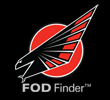|
Q. What is the FOD Finder?
A. The FOD Finder is a new technology that will virtually eliminate human error associated with FOD. This state-of-the art system will save time, money and lives. Please see our FOD Finder™ XF and XM pages for more detail.
Q. How can FOD be managed effectively?
A. Managing FOD is most effective when combined with four areas:
- Training of personnel on the proper removal and disposal of FOD.
- Inspections and documentation of FOD hazards and trends.
- Proper maintenance aircraft operating areas of an airport.
- Coordination with others to create a ramp safety or FOD committee.
FAA Advisory Circulars 150/5380-5B, Debris Hazards at Civil Airports, and 150/5370-2C, Operational Safety on Airports During Construction, provide excellent guidelines for coordinating day-to-day FOD prevention during construction.
Q. What are some of the indirect costs FOD can incur?
A
. Indirect costs can be extensive. Including,
- Flight delays and cancellations, leading to a loss of customers.
- Schedule disruptions caused by the need to reposition airplanes and crews.
- Potential liability because of injury.
- Additional work for airline management and staff.
Q. What about the cost of repairing FOD damage to an engine?
A. Engine repair can easily exceed 20 percent of its original purchase price.
- Purchase cost of MD-11 engine $8-10 million.
- Purchase cost of MD-80 engine $3-4 million.
- MD-11 engine overhaul to correct FOD damage $500,000-1.6 million.
- MD-80 engine overhaul to correct FOD damage $250,000-1.0 million.
- MD-80 fan blades (per set*) $7,000.
*Fan blades are balanced and replaced as a set.
Q. Who is responsible for preventing FOD?
A. The two main parties with a role in preventing foreign object debris (FOD) and the potential resulting damage are airports and airlines.
FAA Part 139.305(a)(4) states, "except as provided in paragraph (b) of this section, mud, dirt, sand, loose aggregate, debris, foreign objects, rubber deposits and other contaminants shall be removed promptly and as completely as practicable."
ICAO Annex 14 Recommendation, Pavements-paragraph 9.4.2 states, "The surface of pavements (runways, taxiways, aprons, etc.) should be kept clear of any loose stones or other objects that might cause damage to airplane structures or engines, or impair the operation of airplane systems." The regulatory agencies of many countries have adopted this statement by ICAO as a requirement.
Q. What time of year is FOD worse?
A. Typically, FOD peaks during the early spring, when airports often begin construction activities, and during the winter because of operations in snow and ice. Issued by the U.S. Federal Aviation Administration, Advisory Circular 150/5200-30A, Airport Winter Safety and Operations, contains specific guidance on using and removing sand to minimize its chances of becoming FOD in winter weather conditions.
Q. Where can FOD collect?
A. Both on and below ground support equipment stored or staged adjacent to the gate area. Jet blast can then blow FOD onto personnel or an airplane. It can also create runway FOD when an airplane transitions from a 150-ft-wide runway onto a 75-ft-wide taxiway. Outboard engines blow any loose dirt and materials from the shoulder and infield areas back onto the runway. Also, the outboard engines of four-engine airplanes can move debris from the runway edge and shoulder areas, where it tends to accumulate, back toward the center of the runway or taxiway. FOD in an engine at takeoff or landing is the absolute worst moment; an aircraft could possibly experience power failure.
Q. What about helicopters?
A. Helicopters that maneuver over freshly mowed or loose-dirt infield areas can also move FOD onto runways, taxiways, and ramps. In addition, the rotor wash from a helicopter can propel lightweight GSE or materials staged nearby.
|

![]()
![]()
![]()
![]() ©2016 Trex Aviation Systems. All rights reserved.
©2016 Trex Aviation Systems. All rights reserved.